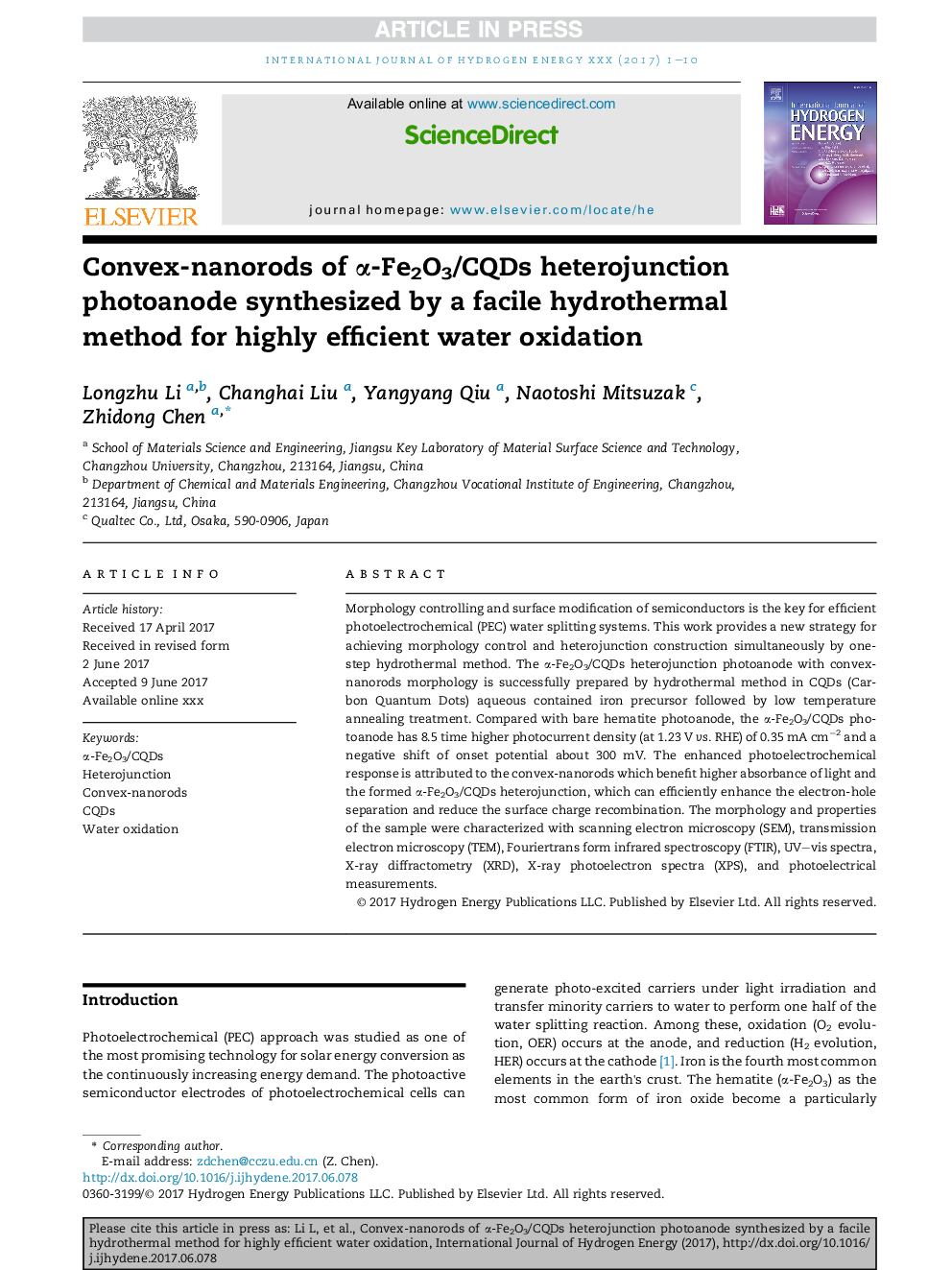| Article ID | Journal | Published Year | Pages | File Type |
|---|---|---|---|---|
| 5146604 | International Journal of Hydrogen Energy | 2017 | 10 Pages |
Abstract
Morphology controlling and surface modification of semiconductors is the key for efficient photoelectrochemical (PEC) water splitting systems. This work provides a new strategy for achieving morphology control and heterojunction construction simultaneously by one-step hydrothermal method. The α-Fe2O3/CQDs heterojunction photoanode with convex-nanorods morphology is successfully prepared by hydrothermal method in CQDs (Carbon Quantum Dots) aqueous contained iron precursor followed by low temperature annealing treatment. Compared with bare hematite photoanode, the α-Fe2O3/CQDs photoanode has 8.5 time higher photocurrent density (at 1.23 V vs. RHE) of 0.35 mA cmâ2 and a negative shift of onset potential about 300 mV. The enhanced photoelectrochemical response is attributed to the convex-nanorods which benefit higher absorbance of light and the formed α-Fe2O3/CQDs heterojunction, which can efficiently enhance the electron-hole separation and reduce the surface charge recombination. The morphology and properties of the sample were characterized with scanning electron microscopy (SEM), transmission electron microscopy (TEM), Fouriertrans form infrared spectroscopy (FTIR), UV-vis spectra, X-ray diffractometry (XRD), X-ray photoelectron spectra (XPS), and photoelectrical measurements.
Keywords
Related Topics
Physical Sciences and Engineering
Chemistry
Electrochemistry
Authors
Longzhu Li, Changhai Liu, Yangyang Qiu, Naotoshi Mitsuzak, Zhidong Chen,
